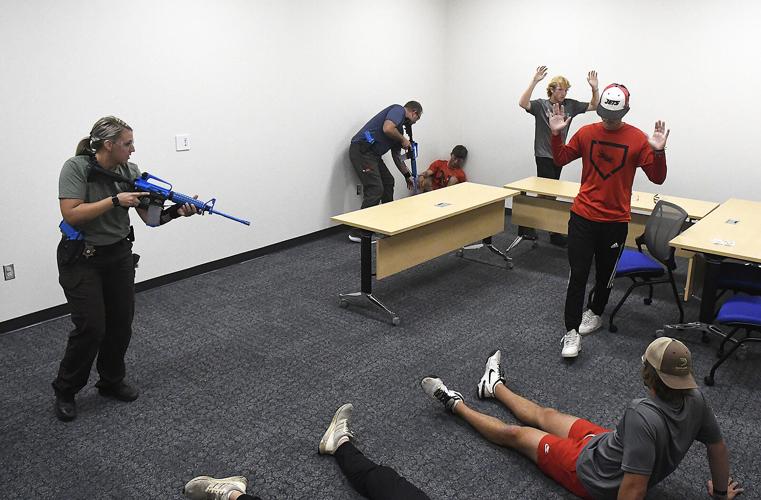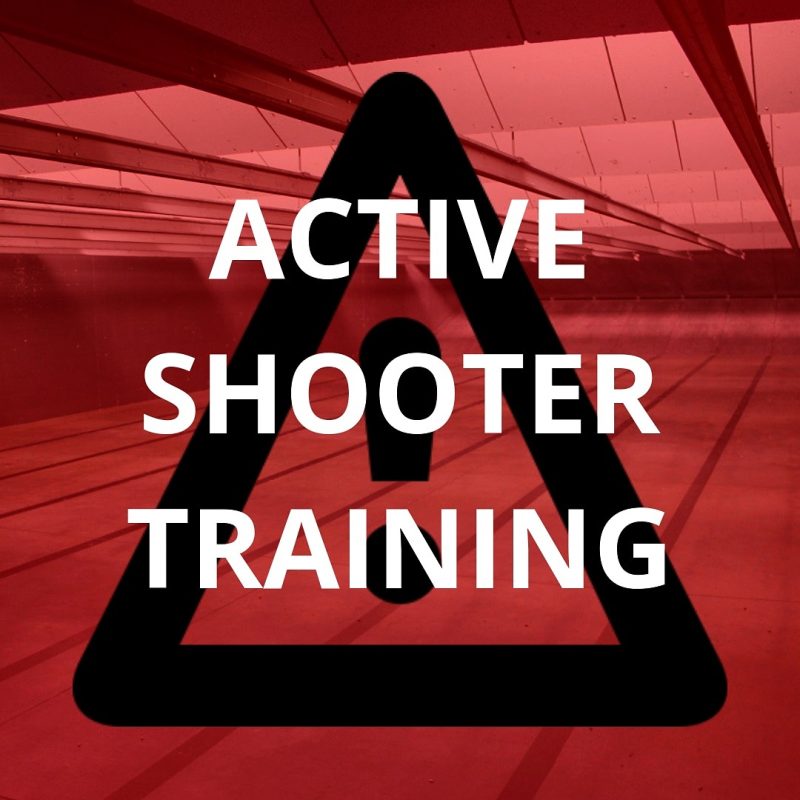The Relevance of Active Shooter Training in High-Risk Atmospheres
Wiki Article
Discovering the Key Parts and Purposes of Reliable Energetic Shooter Training Programs
Active shooter training programs are vital in equipping people and companies with the needed skills to react effectively to possible hazards. These programs integrate vital elements, such as the "Run, Hide, Fight" strategy, realistic scenario simulations, and communication procedures, fostering a setting of readiness. In addition, they stress emotional resilience to aid participants browse high-stress scenarios. As we explore the complexities of these training programs, it comes to be obvious that comprehending their extensive nature is essential to boosting safety procedures and reaction abilities. What particular aspects really specify their performance?Relevance of Active Shooter Training
Active shooter training programs are crucial for enhancing preparedness and feedback despite potential risks. These programs aim to outfit people, companies, and communities with the expertise and skills essential to successfully react to active shooter situations. The boosting frequency and severity of such events highlight the relevance of proactive procedures, as timely and informed actions can significantly mitigate harm.Moreover, energetic shooter training cultivates a culture of safety and security and awareness within organizations, whether they be institutions, offices, or public locations. Individuals discover to acknowledge early caution indicators and recognize the value of communication and team effort during emergency situations. This training not only stresses specific safety and security however likewise advertises a collective responsibility to secure others.
In addition, these programs can aid alleviate the anxiousness and fear that often come with conversations about potential threats. By supplying structured guidance and sensible methods, people acquire confidence in their ability to respond properly. Eventually, the value of energetic shooter training hinges on its prospective to conserve lives, lower injuries, and grow a ready and resistant area with the ability of encountering unanticipated obstacles.
Key Components of Training Programs
Reliable active shooter training programs normally incorporate numerous key components made to prepare individuals for real-world situations. The initial component is thorough education and learning on the nature of energetic shooter cases, consisting of stats, instance studies, and psychological variables that affect aggressors. This academic foundation is crucial for promoting understanding and understanding amongst individuals.Following, programs often consist of training on personal security measures, highlighting the "Run, Hide, Fight" approach. Participants discover exactly how to assess their setting, make quick decisions, and take proper actions throughout a dilemma. Furthermore, the inclusion of effective communication abilities is vital, as individuals need to recognize exactly how to report incidents and share crucial info with law enforcement.
One more essential element is the involvement of legislation enforcement or protection specialists, who give understandings into tactical reactions and the importance of participation throughout a dilemma. In addition, programs ought to resolve the psychological after-effects of an energetic shooter circumstance, offering techniques for dealing and recuperation.
Last but not least, continuous training and correspondence course are important to make certain that expertise continues to be existing and participants feel great in their capabilities. Together, these vital parts develop an all-round training program that equips people to respond effectively to an active shooter event.
Realistic Circumstance Simulations
Sensible scenario simulations are a critical element of energetic shooter training programs, supplying individuals with the opportunity to involve in hands-on practice that mirrors possible real-life circumstances. These simulations enhance the training experience by developing an immersive atmosphere where people can apply theoretical expertise in functional setups.
Via the usage of role-playing, mock situations, and specialized training centers, participants experience the prompt challenges and stress factors associated with an active shooter event. This technique of training promotes fast decision-making, teamwork, and the application of safety redirected here protocols under stress. It allows -responders to create vital skills such as situational recognition, hazard evaluation, and efficient discharge procedures.
Additionally, reasonable simulations assist to determine potential weaknesses in participants' feedbacks, allowing instructors to give targeted responses and boost general preparedness. The unification of varying scenarios, including different locations and assaulter accounts, further improves the training experience, ensuring that participants are fully equipped to take care of a variety of potential situations.
Eventually, these simulations serve not just see this website to advise but likewise to build self-confidence amongst participants, fostering a sense of preparedness that is important for reliable emergency reaction despite an active shooter risk.
Communication Methods in Training
Clear communication is essential in active shooter training programs, as it straight influences the effectiveness of response initiatives during a dilemma. active shooter training. Training participants must recognize the protocols and treatments that will certainly direct their activities if confronted with an active shooter scenario. Developing clear lines of communication makes sure that all people included can relay info without delay and precisely
Additionally, training programs ought to emphasize the relevance of energetic listening. Ultimately, reliable communication methods are essential for preparing individuals to respond emphatically and cohesively in the face of an active shooter incident.

Emotional Preparedness Methods
Psychological preparedness methods are progressively recognized as vital elements of energetic shooter training programs - active shooter training. These techniques aim to gear up people with the mental strength required to respond properly in high-stress situations. By cultivating an attitude in harmony with prospective threats, participants can better manage fear, anxiety, and complication during essential eventsKey mental preparedness approaches consist of scenario-based training and stress and anxiety vaccination workouts. Scenario-based training immerses individuals in reasonable simulations that simulate the turmoil of an active shooter occasion, allowing them to exercise decision-making under pressure. This exposure published here aids build knowledge with emergency protocols, improving second-nature feedbacks.
Anxiety shot involves progressive direct exposure to stress-inducing circumstances, allowing individuals to establish coping mechanisms. This can include breathing exercises, visualization techniques, and cognitive restructuring to reframe unfavorable ideas. By integrating these techniques, training programs can grow a sense of confidence and control, which is crucial in crisis situations.
Moreover, post-incident emotional support is critical to deal with the emotional after-effects of an active shooter event. Including mental health resources right into training programs not only prepares individuals for immediate reactions but additionally promotes long-term mental well-being, ultimately adding to a much safer and a lot more resilient setting.
Conclusion
In conclusion, effective active shooter training programs are important for enhancing preparedness and response abilities in the face of possible risks. By integrating crucial components such as realistic circumstance simulations, interaction strategies, and emotional preparedness methods, these programs furnish individuals and organizations with the essential abilities to browse high-stress situations. Eventually, a comprehensive technique to training fosters resilience and promotes a culture of safety, therefore adding to the general protection of neighborhoods in the occasion of an energetic shooter incident.Report this wiki page